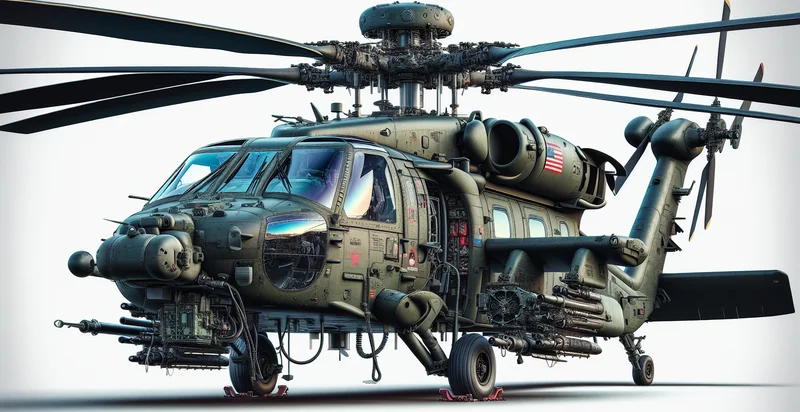Identify military helicopter
using AI
Below is a free classifier to identify military helicopter. Just upload your image, and our AI will predict what type of military helicopter it is - in just seconds.

Contact us for API access
Or, use Nyckel to build highly-accurate custom classifiers in just minutes. No PhD required.
Get started
import nyckel
credentials = nyckel.Credentials("YOUR_CLIENT_ID", "YOUR_CLIENT_SECRET")
nyckel.invoke("military-helicopter", "your_image_url", credentials)
fetch('https://www.nyckel.com/v1/functions/military-helicopter/invoke', {
method: 'POST',
headers: {
'Authorization': 'Bearer ' + 'YOUR_BEARER_TOKEN',
'Content-Type': 'application/json',
},
body: JSON.stringify(
{"data": "your_image_url"}
)
})
.then(response => response.json())
.then(data => console.log(data));
curl -X POST \
-H "Content-Type: application/json" \
-H "Authorization: Bearer YOUR_BEARER_TOKEN" \
-d '{"data": "your_image_url"}' \
https://www.nyckel.com/v1/functions/military-helicopter/invoke
How this classifier works
To start, upload your image. Our AI tool will then predict what type of military helicopter it is.
This pretrained image model uses a Nyckel-created dataset and has 20 labels, including Ah 64, Apache, Augusta Westland, Bell 407, Blackhawk, Breeze, Chinook, Cobra, Comanche and Ka 50.
We'll also show a confidence score (the higher the number, the more confident the AI model is around what type of military helicopter it is).
Whether you're just curious or building military helicopter detection into your application, we hope our classifier proves helpful.
Related Classifiers
Need to identify military helicopter at scale?
Get API or Zapier access to this classifier for free. It's perfect for:
- Surveillance and Monitoring: Military agencies can utilize the identifier function to enhance surveillance systems, automatically detecting and classifying military helicopters in real-time. This capability allows for quicker incident response and a better understanding of aerial movements during military operations.
- Airspace Management: Aeronautical authorities could integrate the identifier into air traffic control systems to manage and monitor military helicopters alongside civilian aircraft. This would improve safety and coordination within shared airspace, reducing the risk of potential collisions.
- Intelligence Gathering: Defense intelligence units can employ the classification function to analyze trends and patterns in the utilization of military helicopters. By tracking their movement and deployment, analysts can gather valuable data about military readiness and possible operational plans.
- Training and Simulation: Military training programs can implement the identifier function in simulation environments to create realistic scenarios involving military helicopter air traffic. This would provide trainees with practical experience in identifying and responding to various helicopter types under different operational contexts.
- Border Security: Agencies involved in border security can use the classification tool to detect unauthorized military helicopter flights near sensitive zones. This would facilitate proactive measures to address potential security threats and enhance overall national security.
- Automated Reporting Systems: Organizations can develop automated reporting systems that leverage the identifier to generate alerts and logs of military helicopter sightings. This would streamline data collection processes for operations centers and improve situational awareness.
- Public Safety and Emergency Response: In emergency management, the identifier can assist first responders in differentiating between military and civilian helicopters. This distinction helps ensure that resources are allocated appropriately and can facilitate coordination in disaster response scenarios where military support is required.


